Neil Grant
SA80 ASSAULT RIFLES
This book is dedicated to Arfon Williams (Wil 71), formerly of the Royal Regiment of Wales, who has been a good friend to my father.
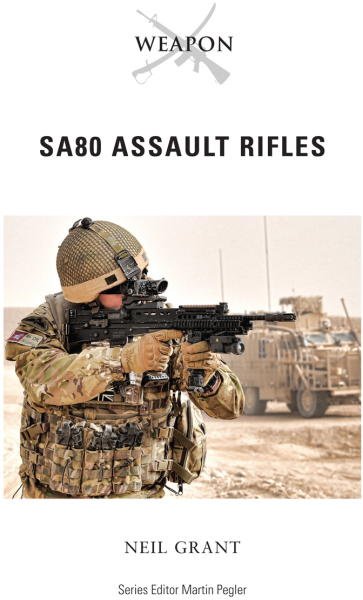
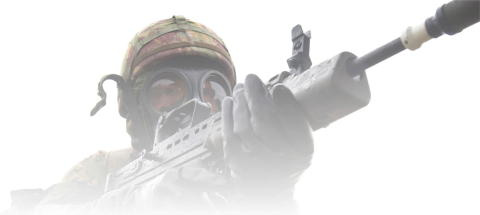
INTRODUCTION
The SA80 is among the most controversial small arms adopted by a major power since World War II. Strictly speaking, the term SA80 refers to the whole Small Arms for the 1980s programme, including the L85 Individual Weapon (IW, as the British Army termed the rifle version), L86 Light Support Weapon (LSW), L22 Carbine and L98 Cadet Rifle. In practice, however, the term usually refers to the rifle version.
On paper, the concept looked excellent. The IW would replace both the 919mm Sterling submachine gun (SMG) and the 7.6251mm Self Loading Rifle (SLR), while the LSW would replace those examples of the L4A4 Light Machine Gun (essentially re-barrelled World War II-era Bren guns) still remaining in service and most examples of the L7 General Purpose Machine Gun (GPMG), leaving only a few of the latter in use in specialized roles. The two new weapons would have a high degree of commonality, dramatically reducing the number of spare parts required in the supply chain. Their adoption would also simplify infantry training, since anyone familiar with one of the weapons would automatically be able to use the other. Meanwhile, advanced design features would result in the new weapons being more compact than anything else available an obvious advantage given the British Armys preoccupation at that time with mechanized warfare against Warsaw Pact forces in Central Europe and with urban patrolling in Northern Ireland. Even better, the new weapons and their ammunition would be significantly lighter than the designs they would replace, enabling soldiers to carry more ammunition despite the extra weight of the body armour coming into service at the same time as the new weapons.
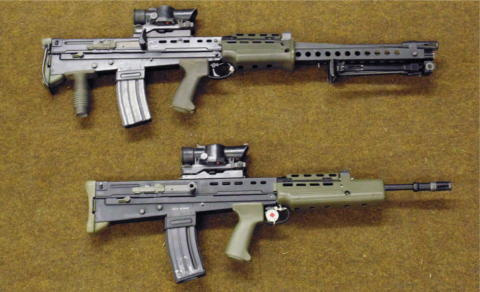
The main weapons of the SA80 system the L85A2 Individual Weapon (below) and L86A1 Light Support Weapon (above). The cocking handle changed from the original round type on the A1 weapon to a curved one on the updated A2 weapon. (Authors Collection)
The reality proved less rosy. The British Army actually found itself fighting very different wars from those it had anticipated, and weapons designed for mechanized combat in Europe proved less suitable for dusty desert environments. Some felt that the older and more powerful 7.62mm rounds would have penetrated the thick mud-brick walls of Afghan compounds better than their lighter 5.56mm replacements. The compromises required to keep the LSW compatible with the rifle version proved incompatible with the qualities needed from a good machine gun, and combat experience led to the GPMG making a comeback. Worse, corner-cutting in design and manufacture led to problems of poor reliability; and the reluctance of the Ministry of Defence (MoD) to admit that the problems existed, and their tardiness in rectifying them, saddled the weapon with a poor reputation that damaged troop confidence and hindered any significant foreign sales. The problems with the SA80 became so notorious that they became a long-running scandal for the press to exploit. Serious consideration was even given to simply scrapping the weapon and buying a foreign design, rather than rectifying the problems.
Whatever ones opinion of the SA80 family, it has undoubtedly been a significant weapon, albeit not always in a positive sense. It has armed almost every British soldier for the last three decades, and will continue to do so for at least another decade, making it a notably long-serving weapon. It has been involved in the heaviest and most sustained fighting British troops have experienced since the Korean War in the early 1950s, including the First and Second Gulf Wars, the Iraqi insurgency that followed, and the long campaign in Afghanistan. It has led to the most significant changes in British small-unit organization since World War II, with consequent effects on tactics and doctrine. Finally, although its replacement has not yet been selected, the SA80 will almost certainly be the last wholly British-designed and -built rifle issued to the British Army.
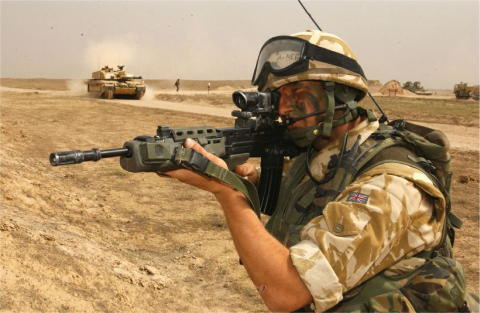
A soldier from The Royal Regiment of Fusiliers in Iraq. It is ironic that almost all of the SA80s combat use to date has been in desert conditions for which it was not designed. (Cody Images)
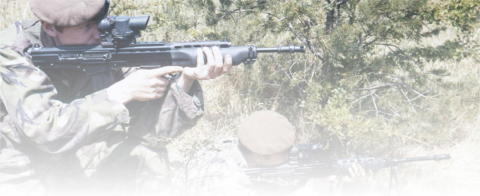
DEVELOPMENT
A new rifle for a new era
Armies entered World War II with rifles firing powerful full-bore cartridges, such as the German 7.9257mm, the British .303in (7.756mm) and the American .30-06 (7.6263mm). All were hard-hitting rounds designed for combat at relatively long ranges, with consequently powerful recoil. They could be fired from semi-automatic rifles such as the US M1 Garand or German Gew 43, and made excellent machine-gun rounds. Any weapon light enough to be issued to every infantryman would be uncontrollable when firing such rounds on full-automatic, however. As a result, the war years saw the high point of the SMG, firing pistol cartridges such as the 919mm Parabellum. However, although these weapons provided more or less controllable automatic fire, they were short-ranged and lacked the hitting power of the rifle. Moreover, German studies during the war showed that most infantry combat took place at ranges of less than 300m, so that much of the theoretical range of the standard rifle round was simply wasted.

The EM-2 rifle. Although many of the design concepts of this bullpup design reappeared in the SA80 programme, the SA80 was neither directly based on nor developed from the EM-2. (Authors Collection)
The Germans shortened the case of their 7.9257mm cartridge to create the 7.9233mm Kurz (short) round, and designed a radical new weapon the StG 44 around it. This was the first assault rifle; a select-fire weapon firing an intermediate cartridge with recoil low enough for the weapon to be controllable on automatic and feeding from an SMG-style box magazine. It was intended to replace both the bolt-action Kar 98k rifle and the MP 40 SMG.
The British Army was influenced by similar research when it wanted to replace the rather elderly Lee-Enfield bolt-action rifle. However, the Ideal Calibre Panel set up immediately after the war felt that while the basic idea of a shorter round was sound, the Germans had shortened their 7.92mm round too much, and the cartridge could be a little more powerful and still remain controllable for automatic fire. They were not alone in this belief: even the Soviet AK-47, which followed the design of the StG 44 quite closely, made use of a longer 7.6239mm cartridge. The British eventually settled on a .276in (743mm) cartridge as the ballistic optimum, though it was known as the .280 to avoid confusion with several .276in cartridges tested in Britain and the United States before the war. They then designed a pair of radical weapons to fire the new round. Both were capable of selective fire (i.e. single-shot or full-automatic) from a 20-round box magazine, and had three radical features besides the new cartridge.

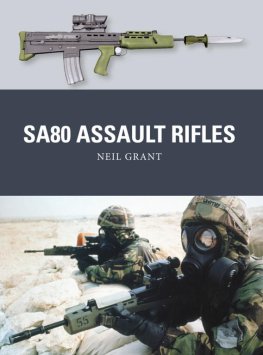
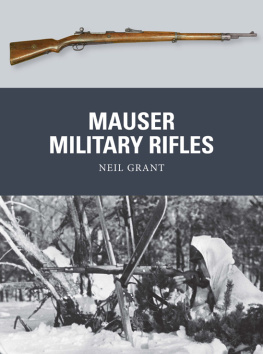

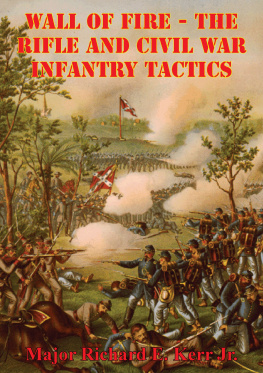
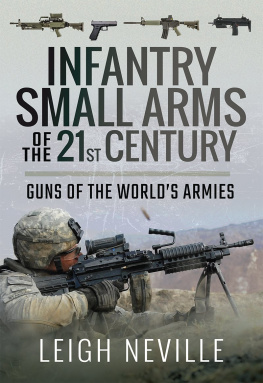
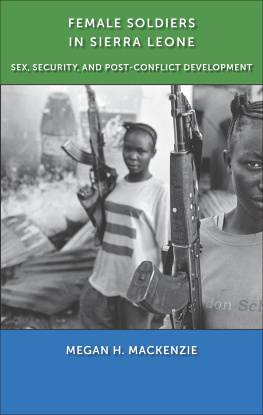
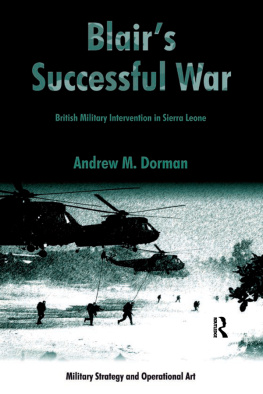
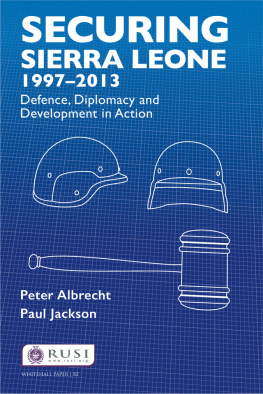
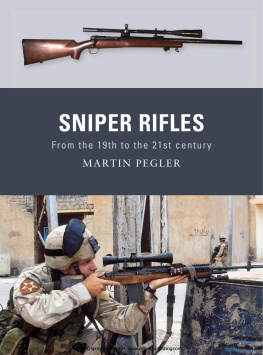
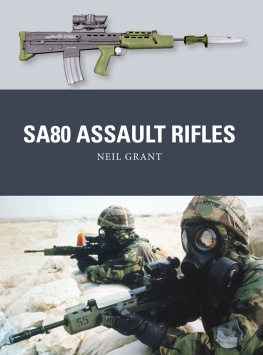


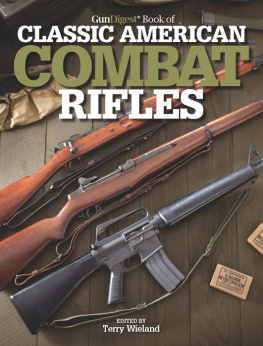



 The main weapons of the SA80 system the L85A2 Individual Weapon (below) and L86A1 Light Support Weapon (above). The cocking handle changed from the original round type on the A1 weapon to a curved one on the updated A2 weapon. (Authors Collection)
The main weapons of the SA80 system the L85A2 Individual Weapon (below) and L86A1 Light Support Weapon (above). The cocking handle changed from the original round type on the A1 weapon to a curved one on the updated A2 weapon. (Authors Collection)  A soldier from The Royal Regiment of Fusiliers in Iraq. It is ironic that almost all of the SA80s combat use to date has been in desert conditions for which it was not designed. (Cody Images)
A soldier from The Royal Regiment of Fusiliers in Iraq. It is ironic that almost all of the SA80s combat use to date has been in desert conditions for which it was not designed. (Cody Images) 
 The EM-2 rifle. Although many of the design concepts of this bullpup design reappeared in the SA80 programme, the SA80 was neither directly based on nor developed from the EM-2. (Authors Collection)
The EM-2 rifle. Although many of the design concepts of this bullpup design reappeared in the SA80 programme, the SA80 was neither directly based on nor developed from the EM-2. (Authors Collection)